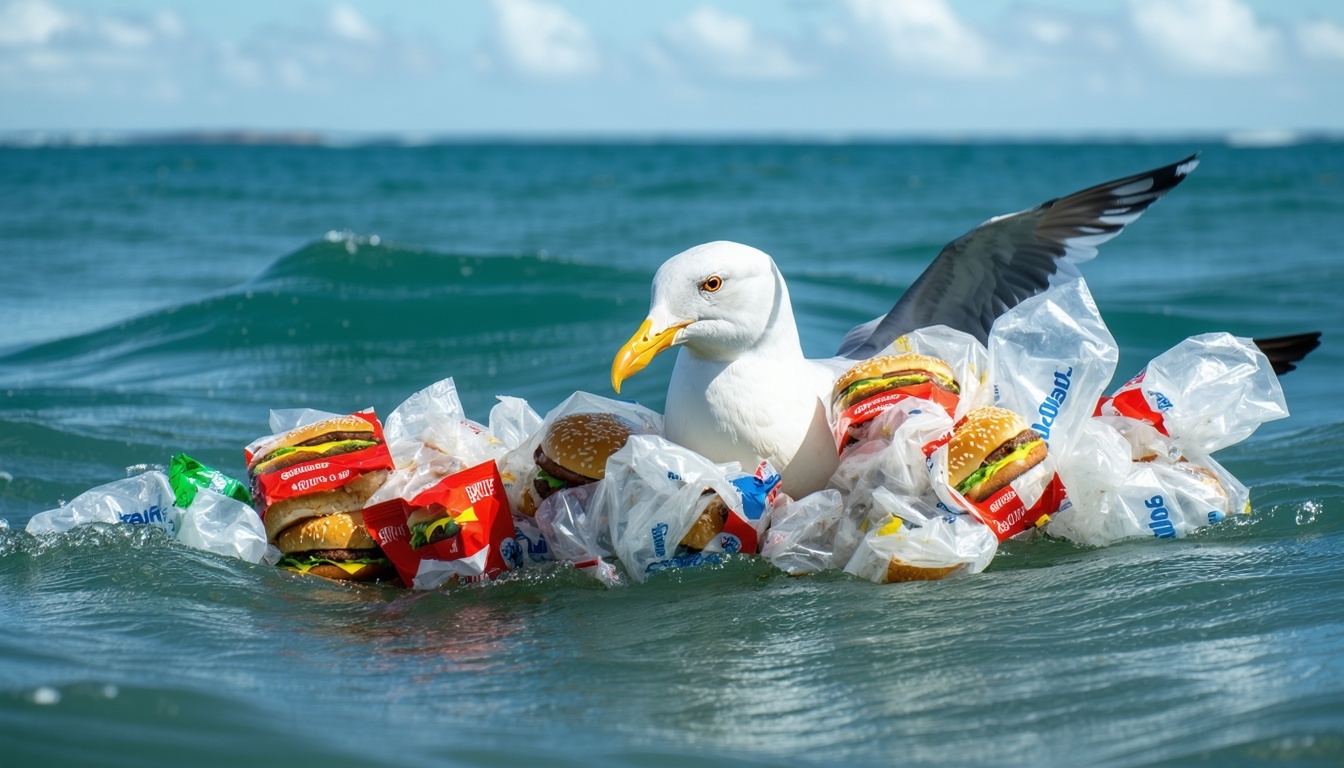How Fast Food Packaging Contributes to Ocean Pollution

Fast food packaging is a significant, yet often overlooked, contributor to the growing crisis of ocean pollution.
The Scale of Fast Food Packaging Waste
The fast food industry generates an enormous amount of waste, much of which comes from single-use packaging. Items such as plastic straws, cups, lids, wrappers, and containers contribute to millions of tons of waste annually. Given the convenience and disposability of fast food, this waste accumulates rapidly, creating a significant environmental burden.
Statistics show that the majority of this packaging is not recycled and instead ends up in landfills or as litter. The sheer volume makes it a major contributor to overall waste, exacerbating environmental issues.
How Fast Food Packaging Ends Up in the Ocean
Fast food packaging often ends up in the ocean due to improper disposal and inadequate waste management systems. Litter from fast food outlets, drive-thrus, and even individual consumers can be carried by wind and rain into storm drains, rivers, and eventually the ocean.
Furthermore, coastal areas and waterways are particularly susceptible to pollution from fast food waste. Once in the ocean, these materials can travel vast distances, affecting marine ecosystems far from their point of origin.
Impact on Marine Life and Ecosystems
The presence of fast food packaging in the ocean poses serious threats to marine life and ecosystems. Animals such as fish, seabirds, and marine mammals often mistake plastic waste for food, leading to ingestion and potential fatality. Ingested plastics can cause internal injuries, blockages, and can even lead to starvation.
Additionally, the breakdown of plastics into microplastics further contaminates the marine environment. These tiny particles can be ingested by smaller marine organisms, entering the food chain and potentially impacting human health as well.
Recycling Challenges and Realities
While recycling is often touted as a solution to waste management, the reality is that many fast food packaging materials are difficult to recycle. Contamination from food residues and the use of composite materials make the recycling process more complicated and less effective.
Moreover, the infrastructure for recycling varies widely by region, and not all areas have the capability to handle the volume or type of waste generated by fast food packaging. As a result, much of this waste is either incinerated or left in landfills, where it can take hundreds of years to decompose.
Steps Towards Sustainable Solutions
Addressing the issue of fast food packaging waste requires a multifaceted approach. One crucial step is the adoption of more sustainable packaging materials. Biodegradable and compostable options can significantly reduce the environmental impact.
Consumer behavior also plays a vital role. Encouraging practices such as bringing reusable containers and reducing reliance on single-use items can make a difference. Additionally, policy measures, including bans on certain types of plastic packaging and incentives for recycling, can drive broader systemic change.
Finally, public awareness and education about the environmental impact of fast food packaging are essential. By understanding the consequences and taking proactive steps, individuals and businesses can contribute to reducing ocean pollution.